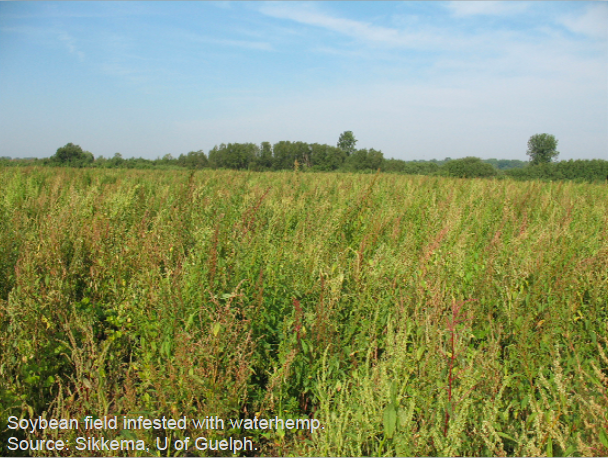Weed control has always been a critical challenge for farmers, and herbicides are an important weed control tool. However, changes can occur in response to herbicide use and other management decisions. Changes in weed populations begin when a small number of plants within a species, called a "biotype," have a distinct genetic makeup that allows them to tolerate a particular herbicide application. Multiple weed biotypes can exist in a single field.

This myth-busting list debunks three common misconceptions about herbicide resistance.
MYTH 1: Overuse of glyphosate causes weed resistance.
BUSTED: According to the Weed Science Society of America (WSSA), the first reports of weed resistance occurred back in the 1950s. To date, there has been no evidence of glyphosate (or any other active ingredient) causing herbicide-induced mutation in any plant species. That is to say herbicides did not and do not cause resistance. Herbicide resistance is actually the plant's naturally inherited ability to survive and reproduce after exposure to what is considered to be a lethal dose of chemicals.
As a farmer continues to use a particular herbicide without any other herbicide modes of action, or doesn't use any other cultural practices (tillage, crop rotation, etc.), the resistant biotypes continues to survive and produce seed. Subsequent populations of the resistant biotype will continue to increase until they are the dominant weed in the field.
Common factors that are often present in areas where glyphosate resistance has developed are:
- Limited or no crop rotation
- Limited or no tillage practices
- Use of glyphosate alone or limited use of other actives
- Reduced or “cut” rates of glyphosate
Particular weed characteristics that can facilitate development of herbicide resistance include:
- Large amount of seeds produced per plant
- High level of germination of those seeds
- Several weed flushes per season
- High frequency of resistant genes
The best way to keep glyphosate powerful is to use it effectively. That mean including an effective tank-mix partner once per growing season and using a diverse crop rotation on your farm.

MYTH 2: Harsh residual chemicals are being used to control glyphosate resistant weeds.
BUSTED: All herbicides have to undergo the same testing and must meet the same health, safety and environmental standards.
Many farmers have grown accustomed to the convenience and effectiveness of using glyphosate alone. The best way to preserve its long-term effectiveness on weeds is to bring in other herbicide modes of action to support it. These complementary herbicides used with glyphosate are not “harsher”; they simply interact with the target weeds differently. They have met the same regulatory standards and have been through the same thorough health, safety and environmental evaluations as glyphosate.
MYTH 3: Herbicides are the solution to all our weed control problems.
BUSTED: Spraying alone is not enough – experts agree that herbicides are important, but other practices should also be implemented.
A successful Integrated Weed Management strategy includes agronomic best practices to limit the introduction and spread of weeds, including:
- Crop rotations
- Periodic tillage
- Seeding rates to promote crop competition
- Planting certified seed
- Cleaning equipment to minimize spread of weeds
Benefits of residuals:
Tank mixing with a herbicide that offers lasting residual effects is an added benefit of keeping fields cleaner, longer. Products like Roundup Ready 2 Xtend™ soybeans are tolerant to both glyphosate and dicamba, allowing for the use of multiple modes of action and residual weed control.
Sources:
Weed Science Society of America. Weed Myths. (verified 04/12/14) http://wssa.net/
Ross, M. Childs, D. Herbicide Mode-of-Action Summary. Department of Botany and Plant Pathology. Purdue University Cooperative Extension Services. (verified 04/12/14) https://extension.purdue.edu/